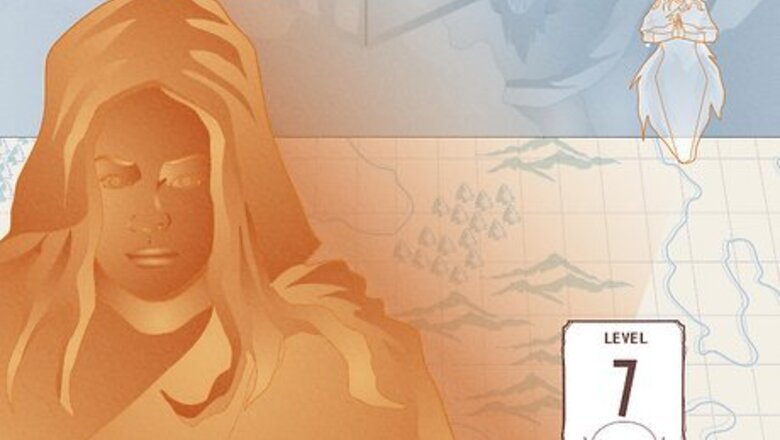
views
- Teleport is a 7th-level spell capable of instantly transporting your character long distances magically, so long as the destination is on the same plane.
- If your character is very familiar with their planned destination, the Teleport spell will likely work. If they’re unfamiliar, there’s a greater chance of the spell malfunctioning.
- Use Teleport to cut back travel time in the campaign, avoid backtracking to places you’ve already visited, and escape dangerous combat situations quickly.
What is the Teleport spell in D&D 5e?

Teleport is a 7th-level spell that lets you magically travel long distances. Most D&D campaigns involve quite a bit of travel—and Teleport is a powerful spell that makes travel effortless! When you cast Teleport, you instantly transport your own player character (PC) and up to 8 willing creatures of your choice (or a single object you can see) to a destination of your choice. All things affected by the spell must be within 10 feet of you. Casting time: 1 action Duration: Instantaneous School: Conjuration Components: Verbal only Available to: Bards, sorcerers, and wizards (meaning you must create a character with any of those classes to use the spell)
Where can you teleport in D&D 5e?
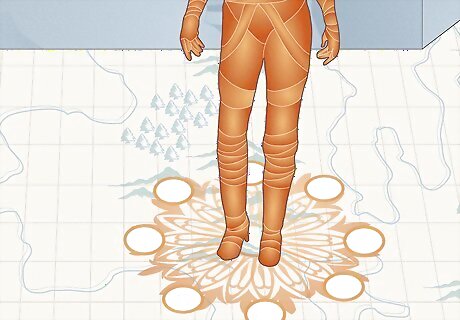
Travel to a permanent teleportation circle with complete accuracy. In D&D, permanent teleportation circles are magically-drawn circles that stay in a fixed spot. If your PC knows the sigil sequence for a teleportation circle, they can cast Teleport and travel directly to the circle’s location—without the possibility of landing off-target or suffering a mishap. A teleportation circle’s “sigil sequence” is a string of magical runes arranged in a pattern. If your PC is able to learn the pattern, they can use the circle. Your GM (game master) will likely be the one to determine when your PC encounters a teleportation circle and when they can learn the sigil sequence. Teleportation circles are often located in major cities or within strongholds of important factions (like the Harpers, Zhentarim, or Lord’s Alliance). It’s also possible to create your own permanent teleportation circle, but it takes a while. To do it, you must cast the Teleportation Circle spell in the same place every day for 1 year.

Visit a location directly related to an item you own. The only other way to teleport somewhere without the possibility of a mishap is to have an object from the destination in your possession. This object must also have been taken from the destination within the past 6 months to work with the spell. Your PC gets to cast Teleport while focusing on the object, boosting their chances of traveling successfully. For example, if your PC has a blanket from their favorite tavern or a book taken from the tower of their wizard ally, they can use those objects to teleport more accurately.
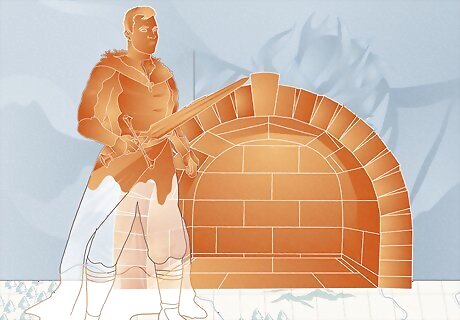
Travel to places you’re familiar with, saw casually or only viewed once. If your PC doesn’t have a teleportation circle or object to teleport with, they have to rely on their familiarity with the destination. Higher familiarity makes teleportation easier, while low familiarity makes teleportation very difficult. The levels of familiarity are very familiar, seen casually, and viewed once, though it’s also possible to teleport based on a description of a location. Very familiar means your PC has been to the location often, studied it thoroughly, or can see the location while casting Teleport. Seen casually means your PC has seen the location more than once but may not know it very well yet. Viewed once means your PC has only seen the location once before, perhaps with the help of magic. Description means your PC’s only knowledge of the location comes from someone else’s explanation or info from a map. Try taking an object from a location to improve your PC’s familiarity with it. Alternatively, visit the location multiple times, see the sights, and get to know the people there!

Teleport to a false destination (meaning a place that doesn’t exist). If your PC learns about a location that isn’t actually real or bases the Teleport spell on a place hidden by illusions, it’d misfire—because they aren’t actually familiar with the destination. When you try teleporting to a false destination, your PC either suffers a mishap or ends up in a location that looks similar to the planned destination. For example, say your PC teleported while aiming for a city they’re familiar with, but the city had been pulled into a different plane (like the Shadowfell). Because the city doesn’t exist on its original plane anymore, the Teleport spell would go awry somehow. Alternatively, say someone described a location for your PC but was secretly lying about it. If your PC tried to teleport based on the description, the spell would fail because the location is made up.
How does the Teleport spell work?

Choose a location to magically travel when you cast the spell. Once you’ve decided to cast Teleport, decide on a destination for your spell. Keep in mind that it has to be on the same plane of existence as your character (meaning it needs to be within the current game world). The destination must also be known to you in some way, whether your PC is very familiar with it or only has a description to go off of. For example, say you’re playing a D&D campaign set on Faerun in the Forgotten Realms. If you wanted to teleport from Luskan to Baldur’s Gate, that’d be possible since both cities are on Faerun. However, if you wanted to teleport from Luskan to Sigil, that wouldn’t be possible since Sigil is located outside of Faerun in its own demi-plane.
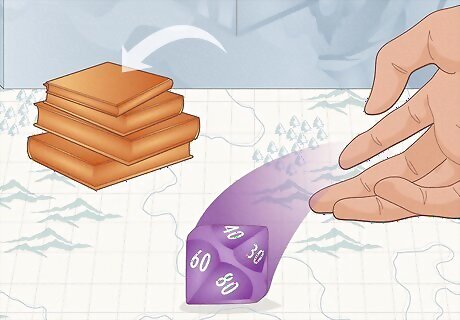
Have your GM roll d100 to see if you’re able to reach the destination. The better your PC knows their destination, the higher your chances of successfully casting Teleport. Ask your GM to roll percentile dice—which consists of a d10 dice (labeled 1 - 10) and a d100 dice (a 10-sided dice with increments of 10, labeled 10, 20, 30, and so on). Then, your GM can determine the result of the spell based on their percentile dice and your PC’s familiarity with their destination, using the following guidelines: Permanent Circle. There’s no need to roll, as any d100 value (0 - 100) lands on target. Associated Object. Once again, any d100 roll (0 - 100) leads to an on-target result. Very familiar. Rolling 01 - 05 results in a mishap, 06 - 13 is a similar area, 14 - 24 is off-target, and 25 - 100 is on-target. Seen casually. Rolling 01 - 33 results in a mishap, 34 - 43 is a similar area, 44 - 53 is off-target, and 54 - 100 is on-target. Viewed once. Rolling 01 - 43 results in a mishap, 44 - 53 is a similar area, 54 - 73 is off-target, and 74 - 100 is on-target. Description. Rolling 01 - 43 results in a mishap, 44 - 53 is a similar area, 54 - 73 is off-target, and 74 - 100 is on-target. False destination. Rolling 01 - 50 results in a mishap, and all others (51 - 100) result in traveling to a similar area.
Teleport Outcomes

On Target When the outcome of your Teleport spell is on target, it means your PC (and any other creatures they bring with them) arrive exactly where they want to be. So, for example, if you cast the Teleport spell intending to make your character and their party members appear in the lounge of their manor house in Waterdeep (a city in Faerun), that’s precisely where they’d end up.
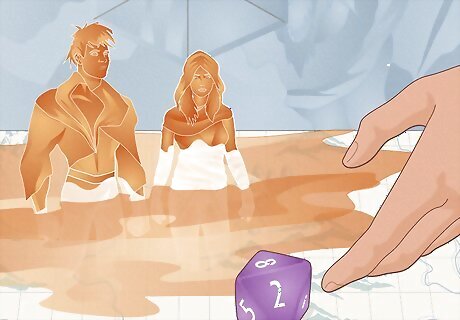
Off Target When a Teleport spell goes off target, it means your PC and any creatures with them end up a random distance away from the planned destination. The formula to determine this is 1d10 x 1d10 percent of the distance that was meant to be traveled. Then, your GM must roll 1d8 (an 8-sided dice) to figure out which direction your PC went while landing off target; 1 is north, 2 is northeast, 3 is east, and so on around the 8 points of the compass. For example, say your PC was attempting to teleport across a distance of 100 miles. If you rolled a 4 and 5 on your d8s, that means your PC would be off-target by 20% (since 4 x 5 is 20). Because 20% of 100 is 20, that means your PC would end up teleporting 20 miles away from the destination. Then, say your GM rolled a 3 on their d8 to determine the spell’s direction (which is east). Altogether, that means your PC’s off-target spell would take them 20 miles east of their planned location.

Similar Area When your PC teleports to a similar area, that means they end up somewhere that looks visually similar to the intended destination—but may potentially be very far away from it. According to the rules, your PC will usually end up in the closest possible location that looks like your destination, but since your GM gets the final say, they could potentially send your PC anywhere in the game’s world. For example, say you were trying to teleport into a library in the city of Waterdeep. If your spell ended up bringing you to a similar area, you might end up in another city’s library instead—like Neverwinter or Candlekeep.
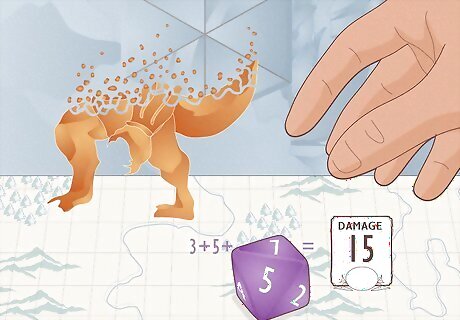
Mishap If you roll a mishap on your Teleport spell, all teleporting creatures (or the teleporting object) take 3d10 points of force damage—the effect of unpredictable teleportation magic making your journey more difficult. Then, once the damage is calculated, your GM must reroll the percentile dice to see where your PC eventually winds up. For example, say you rolled a mishap and ended up rolling a 3, 5, and 7 on your d8s, taking 15 points of damage total. Because mishaps trigger your GM to reroll the percentile dice, it’s possible to endure multiple mishaps with a single Teleport spell. Based on the rules of the Teleport spell, it’s best to ensure your PC is as familiar with their destination as possible before casting! However, from a storytelling standpoint, mishaps can add drama and an extra challenge to the campaign.
How to Use Teleport Effectively

Reduce travel time for a high-level D&D party. If your PC (and their adventuring party) needs to travel a long distance, use Teleport so they can do it as quickly as possible. Teleport also saves the party from possibly having a random encounter on their travels (like a bandit or owlbear attack, for example), which can become tiresome and too easy as your character becomes more powerful. For example, a group of level 15 characters could easily overpower a gang of bandits in 5e, so a random encounter with bandits might end up feeling pointless. You can also use the Teleport spell to prevent backtracking in a campaign. For example, say your PC had to go back and forth between two distant towns to talk to various NPCs (non-player characters). With Teleport at your disposal, you could instantly travel from one town to another and stop your PC from backtracking between the towns for days on end.

Cast Teleport to move objects and party members around a battlefield. In combat, Teleport can be surprisingly useful! The spell allows you to teleport a single object that fits within a 10-foot cube (instead of living creatures). So, you could have your PC teleport an important magic item to one of their allies or teleport a large object and cause it to fall on their enemies. Use your imagination and find interesting ways to manipulate the battlefield! For example, say your PC and the rest of the party were fighting an angry, rampaging Balor (a kind of demon). If a large boulder was nearby, you could cast Teleport on it and cause the boulder to fall onto the Balor, wounding it. Alternatively, if you needed to quickly get a healing potion to a wounded ally, you could teleport the potion right into their hand!

Use Teleport to escape an overwhelming combat encounter quickly. Some fights in D&D 5e are too much for the party to handle! For example, your GM might plan an intentionally difficult fight, or you and your party might simply find yourselves outmaneuvered by your enemies. If you’re worried about the outcome of a fight and want to ensure the entire party lives to fight another day, use Teleport to make your grand escape. For example, if fighting an ancient red dragon in its lair turns out to be a little more than you bargained for, casting Teleport allows the party to heal from their wounds and come up with a more effective strategy to take on the dragon later. Alternatively, if your party gets stuck in a dangerous trap, you may be able to escape it with the Teleport spell.
Teleport vs. Teleportation Circle
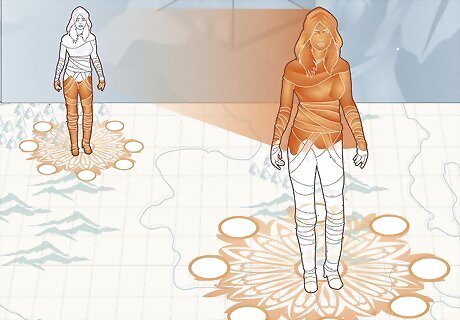
Teleportation Circle can only access permanent teleportation circles. Technically, there are 2 main teleportation spells in D&D: Teleport (a 7th-level spell) and Teleportation Circle (a 5th-level spell). The major difference is that Teleport allows you to travel anywhere in the world so long as your PC is familiar with the locale, while Teleportation Circle only lets you travel to a known permanent teleportation circle. Teleportation Circle also takes 1 minute to cast (as opposed to 1 action for Teleport, which amounts to about 6 seconds). So, while Teleport allows your PC to quickly escape in combat, Teleportation Circle is really only useful outside of combat. Additionally, any creature can pass through your Teleportation Circle spell, while Teleport allows you to choose which creatures to transport. Teleportation Circle is a good spell to know so long as your character knows the sigil sequence for at least 1 permanent teleportation circle. If not, you may not have a use for it.
















Comments
0 comment